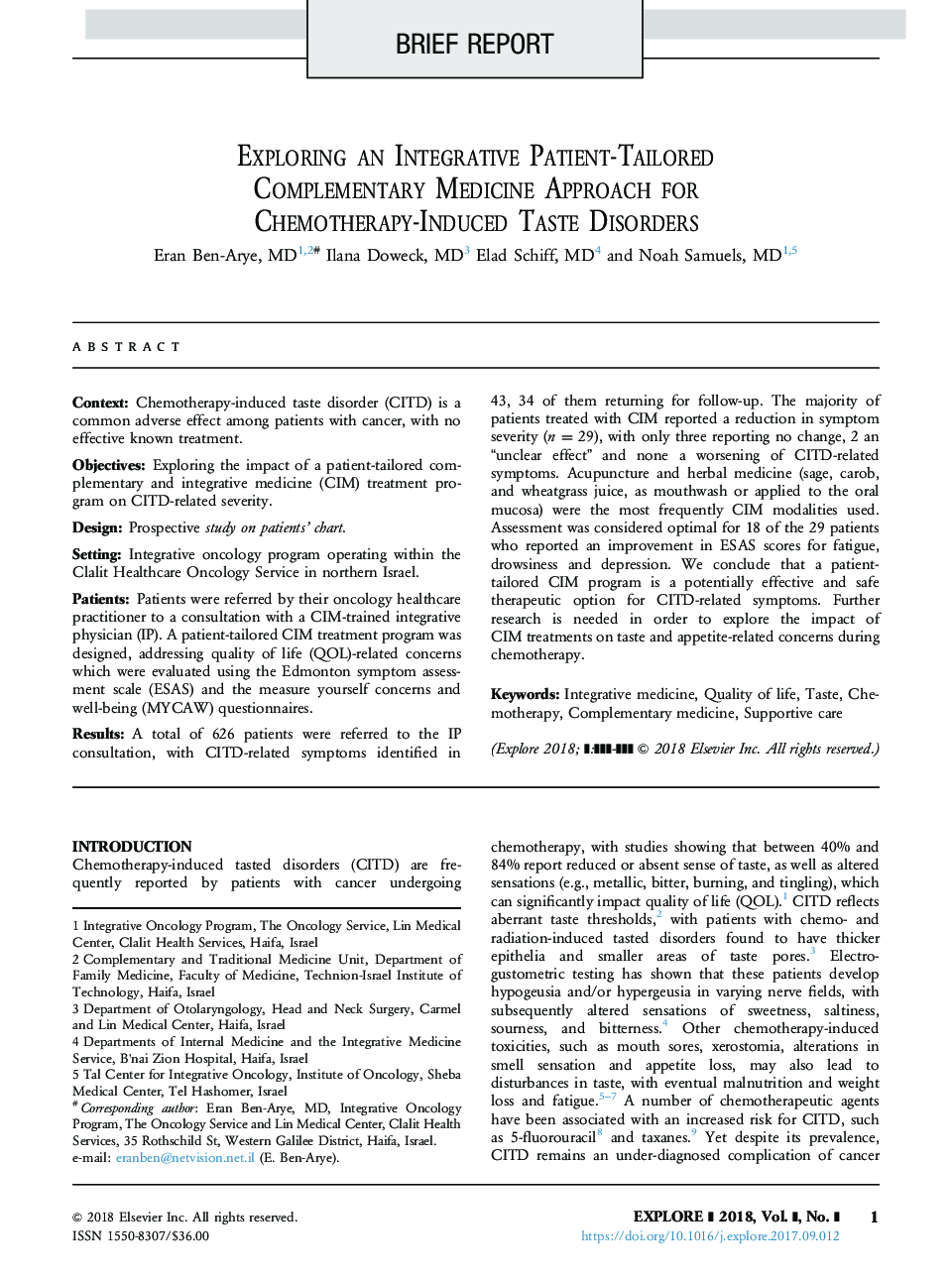| Article ID | Journal | Published Year | Pages | File Type |
|---|---|---|---|---|
| 8588216 | EXPLORE: The Journal of Science and Healing | 2018 | 6 Pages |
Abstract
A total of 626 patients were referred to the IP consultation, with CITD-related symptoms identified in 43, 34 of them returning for follow-up. The majority of patients treated with CIM reported a reduction in symptom severity (n = 29), with only three reporting no change, 2 an “unclear effect” and none a worsening of CITD-related symptoms. Acupuncture and herbal medicine (sage, carob, and wheatgrass juice, as mouthwash or applied to the oral mucosa) were the most frequently CIM modalities used. Assessment was considered optimal for 18 of the 29 patients who reported an improvement in ESAS scores for fatigue, drowsiness and depression. We conclude that a patient-tailored CIM program is a potentially effective and safe therapeutic option for CITD-related symptoms. Further research is needed in order to explore the impact of CIM treatments on taste and appetite-related concerns during chemotherapy.
Related Topics
Health Sciences
Medicine and Dentistry
Complementary and Alternative Medicine
Authors
Eran MD, Ilana MD, Elad MD, Noah MD,
